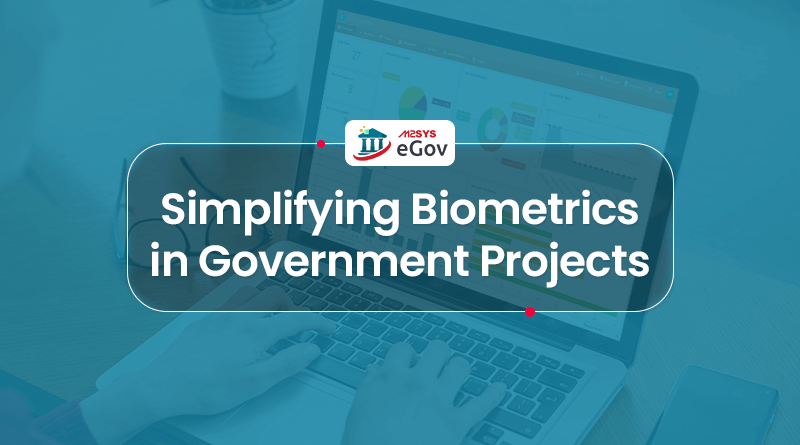Simplifying The Use of Biometrics in Government Projects
Government projects are extremely complex and so are biometric projects, and when you involve biometrics in government projects, pulling one off successfully becomes a herculean task. In fact, unless experienced parties are involved with government biometric projects, it might spell disaster. You see, government projects have several layers, multiple requirements, and are typically large in scale, with numerous parties involved.
That being said, let’s look at why exactly government projects are complicated, especially with biometrics thrown into the mix, and how it is entirely possible to create custom identity management solutions with M2SYS eGov.
Why using biometrics in government projects is tricky
Biometrics itself is quite complicated. Even though it seems simple on the surface, there are multiple technical complexities involved with biometrics, causing development to take a long time. When a government agency wants a solution that involves biometrics, things become far more complicated—let’s explore why.
Government projects require customized solutions
The first thing to understand about government projects is that all of them are unique. While in the private sector, prebuilt solutions are available and used by many. In the public sector, however, most solutions must be customized. Even if the same government agency in different countries requires the same software solution, let’s say a Pension Management System, it must be customized due to variations in language, policies, and other requirements. For instance, in one country, the Finance Ministry (which typically oversees pension distribution) might want to store more demographic information on pensioners in the software than in another country. The agency might have a different distribution process as well, demanding further changes in the software. All in all, any software solution used by governments needs to be customized, sometimes heavily, to meet their specific requirements, increasing development time.
Biometrics mandates additional development
Biometrics is quite complex and requires years of experience to make it work flawlessly. But why does biometrics in government projects require additional development? Well, biometrics involves several components, including:
- Biometric hardware
- Biometric matching engine
- Biometric capture tool
Every component needs to communicate with each other properly so that the solution can work as intended. However, as government representatives might have specific hardware or software that they’d like to use, making them work with the software needs additional development. If these biometric hardware and software are new to the eGovernment solution, the engineers need to understand and modify the eGovernment solution to fit the biometric aspects.
Now, there are quite a few biometric matching engines and capture tools available, as well as hundreds of biometric devices. Every time there’s a requirement where a new biometric software or device needs to be used with the eGovernment solution, additional development is necessary.
Government projects are large in scale
A government looks after an entire country, and its various agencies are tasked with serving the cities or states they’re located in. The eGovernment solutions used by different agencies need to handle a large number of records. For instance, if there’s a Birth Registration System in place, then it must be able to handle all the newborns that are registered using the solution. On the other hand, if a central SIM Registration System is used, it must be able to process millions of records easily.
All government projects are large-scale, and even if the agencies are testing the software before deployment, involved parties need to ensure that the eGovernment solution can handle large amounts of data.
When these government projects require biometrics, not only do system integrators need to male biometrics work with their solutions, but they also need to ensure that the entire solution can handle large amounts of data properly.
Fortunately, government biometric projects can be drastically simplified if system integrators use the right tools—the M2SYS eGov platform is one of them.
M2SYS eGov simplifies biometrics in government projects
The M2SYS eGov platform is one of the most versatile tools available for creating robust eGovernance solutions. While the platform has prebuilt solutions for Birth Registration, Marriage Registration, Death Registration, Vaccine Registration, Law Enforcement Management, and more, it can also help create entirely new solutions from scratch without writing a single line of code! Need a Border Management System, Voter Registration System, Pension Management System, or anything else? The M2SYS eGov platform can help you create any solution easily and rapidly with its drag-and-drop templates.
Everything with M2SYS eGov can be customized, and the best part is that the platform works seamlessly with popular biometric devices and matching engines. Thanks to over twenty years of experience with large-scale biometric projects, the eGov platform has added several biometric hardware and matching engine support over the years. As a result, system integrators don’t have to worry about biometrics if M2SYS eGov is involved. Moreover, as the eGov solutions can be developed rapidly thanks to the no-code platform, it reduces development and deployment time drastically.
Contact us now to learn more about how the M2SYS eGov platform helps simplify and streamline biometrics in government projects.










